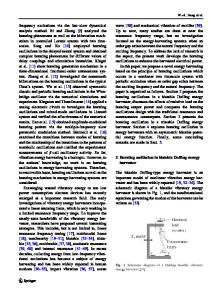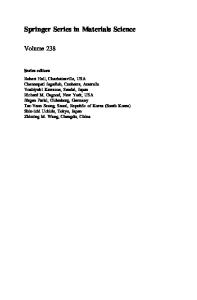Microwatt power management: challenges of on-chip energy harvesting
- PDF / 1,140,208 Bytes
- 6 Pages / 613.276 x 859.89 pts Page_size
- 44 Downloads / 287 Views
Elektrotechnik & Informationstechnik https://doi.org/10.1007/s00502-020-00859-w
Microwatt power management: challenges of on-chip energy harvesting S. Schmickl IEEE , T. Faseth IEEE, H. Pretl IEEE, OVE
IoT devices become more and more popular which implies a growing interest in easily maintainable and battery-independent power sources, as wires and batteries are unpractical in application scenarios where billions of devices get deployed. To keep the costs low and to achieve the smallest possible form factor, SoC implementations with integrated energy harvesting and power management units are a welcome innovation. On-chip energy harvesting solutions are typically only capable of supplying power in the order of microwatts. A significant design challenge exists for the functional blocks of the IoT-SoC as well as for the power management unit itself as the harvested voltage has to be converted to a higher and more usable voltage. Simultaneously, the power management blocks have to be as efficient as possible with the lowest possible quiescent currents. In this paper, we provide a look at on-chip microwatt power management. Starting with the energy-harvesting from RF power or light, we then show state-of-the-art implementations of ultra-low power voltage references and ultra-low power low-dropout regulator (LDO) designs. Keywords: LDO; photovoltaics; power management; RF energy harvesting; ultra-low power
Microwatt Power Management: Herausforderungen bei On-Chip Energy Harvesting. IoT-Geräte werden immer verbreiterter. Wachsendes Interesse gibt es dabei an einfach wartbaren und Batterie-unabhängigen Energiequellen, da Kabel und Batterien in Applikationen, wo Milliarden von Geräten in Einsatz sind, unpraktisch sind. Um die Kosten niedrig zu halten und den kleinstmöglichen Form-Faktor zu erreichen, sind SoC-Implementierungen mit integriertem Energy Harvesting und Power-Management-Blöcken eine willkommene Innovation. On-Chip Energy Harvesting-Lösungen können typischerweise Energie nur in der Größenordnung von Microwatt liefern. Es existiert dadurch nicht nur eine große Design-Herausforderung für die funktionalen Blöcke des IoT-SoC, sondern auch für die PowerManagement-Einheiten, da die gewonnene Energie oft in eine höhere und besser nutzbare Spannung konvertiert werden muss. Gleichzeitig müssen die Power-Management-Blöcke so effizient wie möglich sein und niedrigste Ruheströme vorweisen. In dieser Arbeit geben wir einen Einblick in vollintegriertes (On-Chip) Microwatt Power Management. Beginnend bei Energy Harvesting von RF-Energie oder Licht, zeigen wir weiters aktuelle Implementierungen von Ultra-Low-Power-Spannungsreferenzen und Ultra-Low-Power-Low-Dropout-Spannungsreglern (LDO)s. Schlüsselwörter: LDO; Photovoltaik; Power Management; RF Energy Harvesting; Ultra-Low Power
Received October 1, 2020, accepted November 23, 2020 © The Author(s) 2020
1. Introduction With a predicted number of more than nineteen billion short-range IoT devices in 2025 [3], there is also an upcoming challenge regarding the power supply of t
Data Loading...











